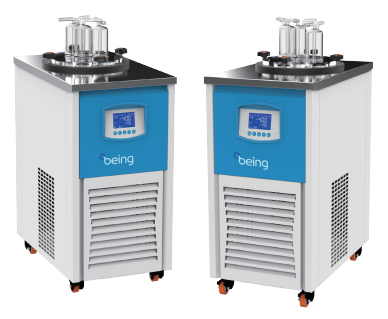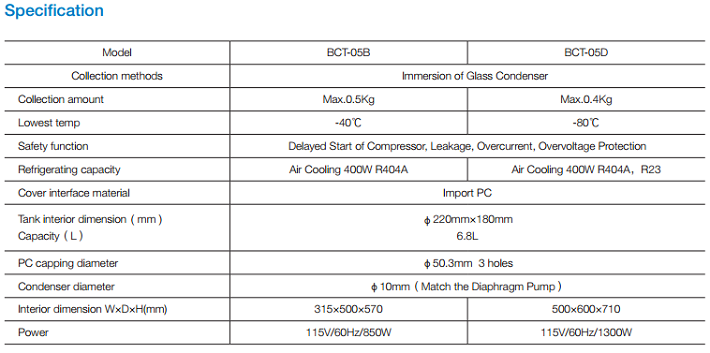Being Bath
Position:Home > Being line > Being Bath > Cold Trap Bath
Cold Trap Bath
2019-12-04 | Source:Being | Hits:Summary
In vacuum applications,a cold trap is a device that condenses all vapors(except the permanent gases) into a liquid or solid. The main purpose is to prevent vapors being produced by an experiment from entering the vacuum pump where they would condense and contaminate it. Clod traps can also cool surfaces or baffles to prevent oil vapors flowing from a pump into a chamber. In such a case,a baffle or section of pipe containing a number of cooled vanes, will be attached to the inlet of an existing pumping system.
Features
Anti-strong chemical corrosion
●The low temperature of the cold trap can condense the water vapor directly in the cold trap, thus greatly improving the working efficiency of the vacuum pump.
Protect vacuum pump
● Pumps that use oil either as their working fluid (diffusion pumps), or as their lubricant (mechanical rotary pumps), are often the sources of contamination in vacuum systems. Placing a cold trap at the mouth of such a pump greatly lowers the risk that oil vapors will back stream into the cavity.
LCD PID controller
● P.I.D temperature controller provides accurate and reliable temperature control.
● Large LCD display screen and interface provides for user-friendly operation.
Energy conservation and environmental protection
● non-freon refrigeration improve cooling efficiency, lower noise, longer life time ensures the stability for long time running.
Safety
●Temperature deviation alarm.
●Compressor over current , over heat, over load protection.
Design with
● 3 glass trap installation.
● Upside opened Glass Trap.
● Easy internal observation with PC Transparent Cover.
● Drain valve for easy discharge of collected liquid.
● S304 internal bath can be used to do water or ethanol cooling experiments. If equipped
with glass condenser, it also can be used to deal with acid or organic solvents.
Option
● RS 485 connector and USB connector can connect computer to save the data.


Prev: Cold Trap Diagram

